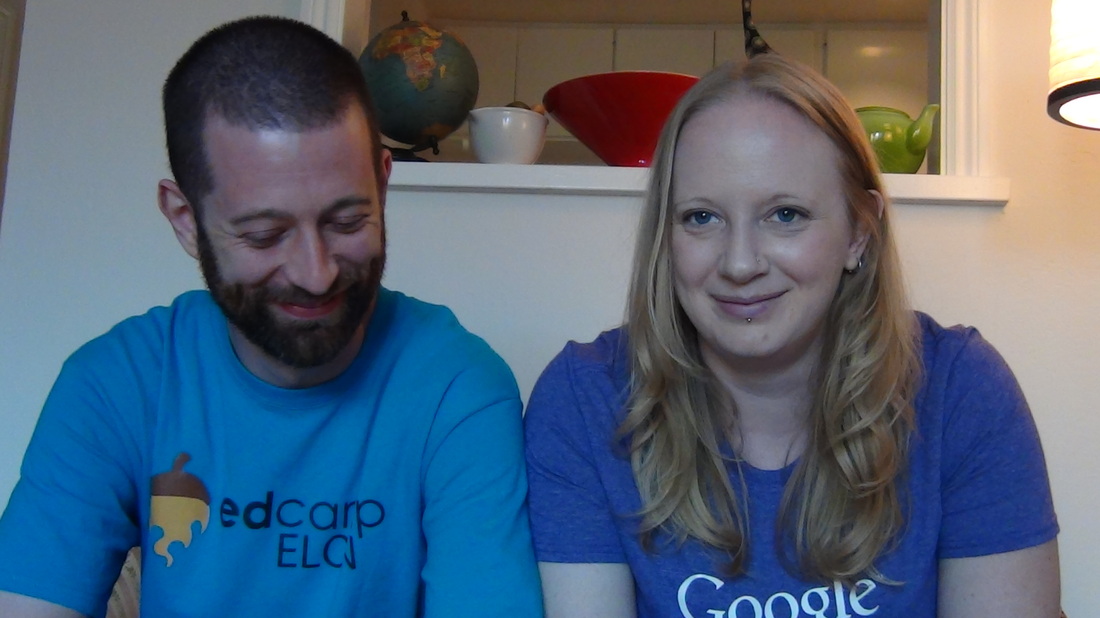He sighed a little in exasperation, but sure enough, he played around with the buttons and settings and discovered that he could, indeed, figure it out.
When I was in high school, if I wanted to know something, I either had to look it up in a book, or ask a teacher. Both of those things required being in a specific place at a specific time, and if I wanted to know something when I wasn’t in that place at that time, I was out of luck.
Today, students have more information at their fingertips than anyone has in the entire history of the world.
And they still ask questions for which answers are easily searchable on the Google machine.
There are really two schools of thought when it comes to students accessing the internet. One is that we should limit their access to a very small range of topics and sites because who knows what they will find if we don’t! The second school of thought is that students need more open access so they can learn how to navigate the web in the “real world,” but with the guidance of an expert.
While many IT departments would disagree, I am in the second school of thought. It’s like driving: you don’t learn how to drive by watching driver safety videos. You learn by doing it. That involves making mistakes and near-misses. That involves having enough freedom to fail, but with guidance to keep you alive and in one piece.
We have to teach our students how to search the ENTIRE web. In my class, I start by teaching them Google Advanced Search, but the assignments also cover the content for my class.
We start with talking about images and Creative Commons. Part of Advanced Search is choosing usage rights for images - from ones that are free to use, share, modify, to even images that can be used commercially. Most students have never even heard of “fair use” - they just take images they like and use them however they want. So when I ask students to search for images to illustrate historical timelines, they learn how to cite those images correctly.
From there, I teach them how to search for information in particular file formats. They look for PowerPoint files about Sumerian innovations and inventions. After looking through at least five PowerPoints, they choose three good ones, then create a slide deck highlighting the five most important innovations and inventions made in Ancient Sumer.
Another assignment requires them look for PDFs about the amazingness of Mohenjo-Daro (best ancient civilisation ever!), in the Indus River Valley Civilisation. Again, they choose three good sources from all the ones they find, then create a Google Drawing advertising Mohenjo-Daro to other 6th graders.
Asking for a particular file format eliminates many of the blogs and forums that students find so alluring and teachers find so reprehensible when they appear in a Works Cited page. But it also ensures students will find relevant sources and spend less time digging through everything else. Most often, the resources students find were created to be used in schools or universities.
These assignments require using good search terms, evaluating credibility and relevance, providing citations to each source, synthesising the information in all sources, and creating digital media using that information. When they get good at one skill, we move to another.
I also give them assignments that have a search challenge to help them better hone their search terms. One such challenge is called the Geography of You. I ask students to find 20 objects, including at least two foods, two pieces of clothing, two pieces of furniture, and two items that represent their hobbies, and find out where in the world they were produced. However, they can’t just give me a country. They need to identify WHERE in that country the product was made. This involves some pretty challenging searches.
These skills are not ones you can give a single lecture about and assume they get it, and it’s not something “they should just know by now!”
The truth is that students need to be taught these skills, and searching is most definitely a skill. They need practice, they need feedback, and they need guidance.
It’s one step closer to making my students responsible users of the web, and also one step closer to squashing the belief that the teacher is the source of all information.
Not answering the questions my students ask often makes me feel like a bad teacher, but the reality is that they never should be asking me in the first place. Maybe someday we’ll reach the point that a student doesn’t raise his or her hand to ask a question, but rather, they raise their hand to share information that they have just found using Google Advanced Search.
It can happen. One unanswered question at a time.


 RSS Feed
RSS Feed
